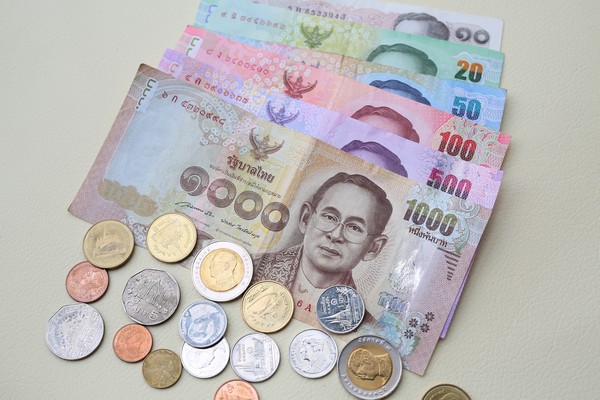The Thai baht is projected to depreciate to approximately 33.80 against the US dollar this week, influenced by a stronger dollar following a temporary pause in the US-China tariff conflict.
Despite this expectation, the baht is likely to remain volatile.
Roong Sanguanruang, senior vice-president for global markets planning at Bank of Ayudhya (Krungsri), indicated that the bank forecasts the baht to fall within the range of 33.00 to 33.80 per dollar this week due to increased uncertainties.
On Monday, the US and China reached an agreement to reduce tariffs on each other for a period of 90 days, which bolstered both the dollar and the yuan.
Nevertheless, ongoing uncertainties continue to impact the volatility of the baht against the dollar.
As part of the temporary agreement, the US will lower additional tariffs on Chinese imports from 145% to 30% over the next three months, while China will drop duties on US imports from 125% to 10%.
Ms. Roong noted that the baht’s depreciation is also being influenced by falling global gold prices, which recently adjusted to around $3,200 per ounce, as the baht tends to correlate more closely with gold than with other currencies.
The baht opened at 33.38 per dollar yesterday, a significant decline from Friday’s close of 33.02, breaking through the resistance level of 33.30 and testing the critical level at 33.50, according to the Global Markets Division of Krungthai Bank.
Poon Panitchpibun, a money market strategist at Krungthai Global Markets, explained that the baht’s fluctuation reflects the strengthening of the US dollar, which has been supported by an improved risk sentiment following the temporary US-China trade agreement.
“This development alleviated concerns about a severe slowdown in the US economy and reduced expectations for aggressive interest rate cuts by the Federal Reserve,” he stated.
Market participants now anticipate only two rate cuts by the Fed this year, according to Mr. Poon.
Some analysts have even revised their projections, delaying the expected rate cut from the July meeting to December.
Over the past week, the Fed’s cautious stance on rate reductions, combined with optimism surrounding trade negotiations with key partners and robust US economic data, has contributed to the gradual strengthening of the dollar, he added.
“Given this scenario, we expect the baht to continue its decline, reaching a range of 32.95 to 33.75 per dollar this week,” Mr. Poon concluded.





